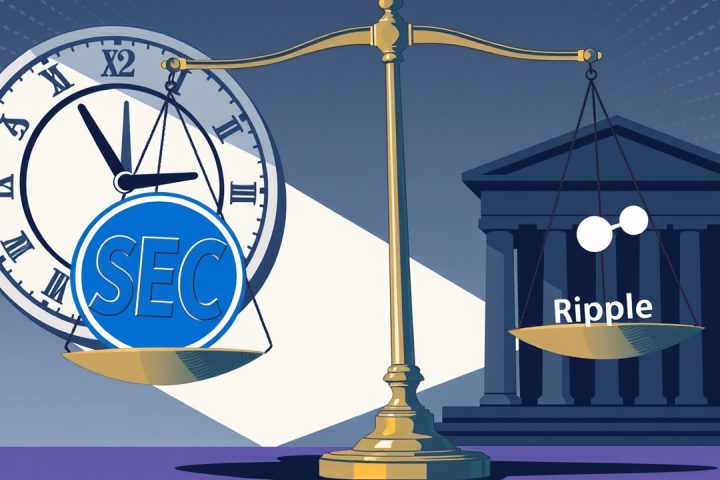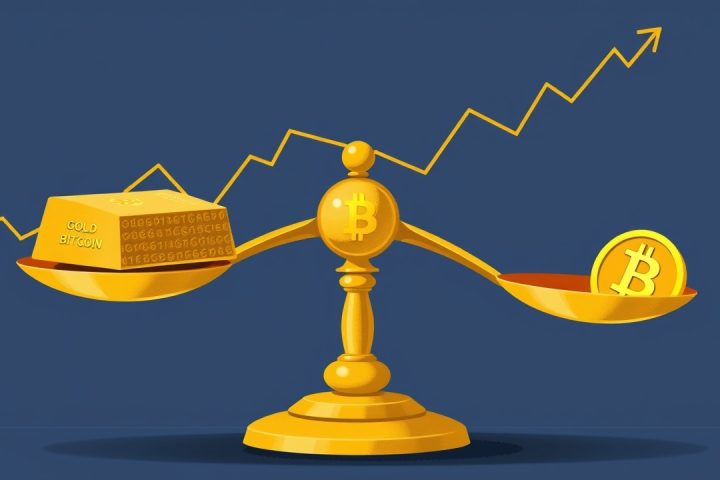Statement Summary
The SEC’s recent discussions on expanding retail access to private markets raise concerns about blurring the vital distinction between public and private investments. The SEC emphasizes that public markets, characterized by strict regulations and higher disclosure requirements, are attracting investors with their transparent nature, while private markets carry significant risks due to reduced oversight and transparency. Current trends suggest that pushing retail investors into private markets, often portrayed as lucrative avenues, could lead to exposing them to high-risk investments lacking appropriate protections. The call for democratizing access without enhancing regulatory safeguards may lead to risky financial outcomes, especially for retail investors who may be offered ‘leftover’ investments shunned by institutional players. Therefore, any attempts to open private markets to retail investors must be accompanied by robust regulatory measures to protect against potential systemic risks.
Original Statement
Good morning. Thank you [Gina-Gail] for the kind introduction and thank you to Better Markets for the invitation to speak with all of you today. Before I begin, let me make my standard disclaimer – the views I express today are my own and do not necessarily represent the views of the SEC or my fellow Commissioners. While there’s been a lot of breathless coverage of crypto lately, today, I’d like to turn our attention to a different topic: private market access.
American capital markets appeal to investors the world over because of their depth, liquidity, and the stability created by well-crafted, conscientious, and reliable regulation. Underlying this complex ecosystem is the separation between public and private markets – and the regulations that draw those boundaries. That separation is deliberate, time-honored, and intended to reflect real, important differences between public and private investment opportunities and the nature of underlying issuers.
While the United States can proudly claim the gold standard of financial markets across the globe, Germany’s Autobahn system is equally renowned as a feat of infrastructure. Of course, the Autobahn is famous for its general lack of a speed limit. But, much like the separation between the public and private financial markets in the U.S., the Autobahn is a distinct network, separate and apart from other roads. Like private markets in the U.S., the Autobahn is available to those with a higher risk appetite – but it’s not open to just anyone with any vehicle and it is carefully regulated and monitored.
To drive on the Autobahn, cars must be able to meet a minimum speed requirement, obviously mopeds and bicycles aren’t allowed, and specific safety rules are diligently enforced by a specialized highway patrol. There are also segments of the Autobahn that do have speed limits, and certain vehicles, like trucks, have lower speed limits.
As calls for retail investor access to private markets accelerate, I am concerned that we are headed for a high-speed collision – with main street retail investors left without airbags. First, I worry that we are recklessly blurring the important separation between our public and private markets. Second, I am concerned that this push for private market access is done without regard to the risks and current performance of those markets relative to public markets. Finally, I fear that we have failed to right-size our regulatory approach to private markets in recent decades. As a result, we are now increasingly exposing retail investors to dangerously bloated risks that they, and regulators, are not prepared to face.
Flooring It Through the Public-Private Markets Divide
The divide between our public and private markets reflects one of the most basic principles of securities regulation: access to broader public markets requires more disclosure to investors and more oversight by regulators. This is true for operating companies as well as investment funds. We know from almost a century of regulation since the Great Depression that this balance of more disclosure for more access to public capital markets – and retail investors – works. Data have shown that more extensive disclosure requirements in equity markets, coupled with strong securities regulation and stricter enforcement mechanics, actually lower the cost of capital for investors.
In recent years, conversations about increasing access to private markets sometimes include expressions of alarm about the decline in the IPO market since the 1990s and early 2000s. It seems some of this talk of decline may be hyperbolic. The data actually show an ebb and flow over time, and, in fact, we saw a record-breaking twenty-year in the number of IPOs in 2021. Either way, the topic of IPO activity inevitably leads to perturbations about increases in the regulatory burdens for public companies. But, a closer inspection of the private markets ecosystem suggests that there are other reasons why operating companies and funds have concluded the private markets are the right environment for their business.
In fact, some argue that in the private markets has encouraged capital to skirt the public markets and its required transparency. Others note that market forces independent of regulation, such as increased M&A activity and greater availability of private capital, are the true cause of this shift. And yet, a lag in the IPO market is often used as evidence that growth opportunities for investors are far more plentiful in the private markets – where retail investor access is limited. But, lagging IPO numbers are an odd justification for pushing even capital into private markets. If we are concerned about declines in public market participation, I doubt that driving more investors into private markets is the answer. Instead, perhaps these developments should prompt us to revisit the equilibrium between public and private markets.
It’s clear that the reason private markets are more attractive than public markets is, at least in part, that we have not adequately adapted our regulatory regime to address the private markets as they have grown to exist today.
Current Traffic Jams in the Private Markets
Comments touting the need for broader access to private markets spin a story to retail investors that they’re missing out on windfall investment opportunities in the private markets – financial FOMO, if you will. They hear that the securities laws and our rules are all that’s standing in between them and guaranteed wealth and security in a land of milk and honey. The sales pitch for this illusion comes at a time when many Americans are desperate for a sliver of economic hope. Inflation persists, the labor market has slowed, and ongoing market volatility is unsettling. But pitching private markets access as the key to financial security and prosperity perhaps only dangles false hope.
First, the uncomfortable truth about this sudden push for greater retail-investor access to private markets may be – that we are opening the gates because of investor demand – but rather that there is excess supply because many of the usual sources of private market capital are drying up. In fact, recent data show a sector-wide contraction in private equity representing a seven-year low point in capital raising by private equity firms. And, the stock prices of major private equity firms are struggling despite the promise of imminent exposure to retail investor’s pockets. Private credit is also suffering from decreased borrower interest after several years of explosive growth. Indeed, some of the most highly sophisticated private investors – public pension funds – are paring back their private credit investments due to concerns about looser underwriting standards and rising credit risks. If these developments are concerning to large institutional investors, they should certainly be worrisome for small retail investors as well.
Second, there is good reason to doubt the promise of mammoth returns. Recent data show that private markets have actually performed large-cap U.S. stocks on a one-, three-, and five-year basis. Even in more promising market conditions, retail funds with exposure to private investments come with higher fees and expenses that eat into any potential returns for investors. The race for retail exposure to notoriously high-cost private markets is especially puzzling since many traditional retail funds offer incredibly low, or even zero, expense ratios.
Third, there is also the significant risk that retail investors would get access only to investments that more sophisticated investors have already turned down. The reality that retail investors will likely be served only “leftover” private investments for higher fees than traditional retail investments raises the specter that retail investors may be taken for a ride. All of this is to say, retail investors’ retirement savings will be used to prop up wobbling private markets purely to save private firms hungry for more capital and to benefit asset managers eager to collect the exorbitant fees. But at what cost to retail investors? At what cost to the economy? At what cost to the country?
But, putting that aside, let’s assume for a moment that there may be some performance upside for retail investors in funds with private markets exposure. That sounds great – until a retail investor wants to get off the Autobahn. The assumption by those pushing for increased access to private markets is that retail investors buy-and-hold for decades when they invest long-term for retirement, so the decreased liquidity in private markets investments won’t be an issue. In reality, retail investor behavior isn’t that simple. What about retirement account rollovers as investors change employers over time? And what about non-retirement retail investments? What if investors need quick access to their money for any number of reasons – like job loss, buying a house or large, unexpected expenses? We have already had a glimpse of what happens when liquidity in a private fund screeches to a halt.
In one recent example, investors nervous about rising interest rates flocked to redeem only to find that the fund had limited redemptions – and continued to limit them for over a year. Now imagine that type of turmoil on a much larger scale – beyond just the wealthy investors in a private fund. The potential liquidity mismatch between retail investor needs and private investment duration may cause significant harm, not only to the individual investor, but on a more systemic basis in times of stress.
The Commission’s Role as Highway Patrol
Unfortunately, this expansion of private markets is coming at the same time the Commission has backed away from the prospect of meaningful oversight over the private markets. In the discussions about expanding retail access to private markets, it’s curious – and concerning – that I haven’t heard much about the need for corresponding expansions in oversight. Interestingly, in recent days, I have noticed some new talk about the need for “guardrails” from proponents of retail access to private markets. I certainly agree. But I’ll admit I’m a little confused because some of those same voices actively opposed a prior Commission’s efforts to actually install those same guardrails.
We cannot just give lip service to the importance of these protections. And we cannot use the promise of some hypothetical future protections as an excuse to let retail investors ride into 100 mile per hour traffic today. After all, as we’ve discussed, the reason that the private markets are allowed to function with less oversight and less transparency than the public markets is precisely because they are available to main street investors.
This specific point is fresh in our minds given the private fund adviser rules that were adopted by the Commission in 2023. The rules would have enhanced the regulation of private fund advisers in several important ways, including by requiring quarterly statements, annual audits, and would have restricted certain activities with disclosure-based exceptions. The principal challenge that opponents to the rules raised was that Congress intended to draw a “sharp line” between private funds and funds that serve retail investors, and the petitioners argued that the rules crossed that line. And, ultimately, the rules were vacated by the Fifth Circuit.
But where is the enthusiasm for that same sharp line now that private funds want retail investors’ money? Apparently, to some, the public-private markets divide should exist only when it’s being used to resist regulatory oversight. In facilitating retail access to private funds, it seems that this Commission has conveniently forgotten the basis for the Court’s ruling. If we now intend to allow retail investors to be exposed to private funds, that change fundamentally alters the nature of those funds under the federal securities laws. It’s worth asking whether that change would empower the Commission to more directly regulate those funds, as we sought to do with the private fund adviser rules.
The import of our public and private markets divide should be clear: if you let retail investors onto the Autobahn, there must be a highway patrol.
With retail access to private markets, one might also reasonably expect more focus on systemic risk issues posed by the expansion of those markets. Currently, the Commission monitors for systemic risk posed by certain private funds by reviewing data submitted confidentially on Form PF. In 2024, the Commission adopted amendments to the form that would enhance the quality of the data filed on the form. Opening up private markets to retail investors in the manner currently contemplated would fundamentally change how those markets function. This seismic shift creates the real possibility of increased systemic risk to our entire financial system. Yet, in this exact same moment, the Commission is actively preventing those improvements to Form PF from coming online.
To be sure, it’s an interesting time for the Commission to decline better data on systemic risk in the private markets. In past crises, we have learned the hard way that distress in private funds can have catastrophic ripple effects throughout our markets. Better data about private fund strategies would help us identify those risks as they come down the road and respond with evasive maneuvers in the event of an approaching crisis. Today, there are a multitude of risks in the private markets worthy of our attention, including private credit’s interconnectedness with banks and insurers and the concentration of private fund assets in only a few large managers. These risks, among others, warrant a watchful eye – and that’s just the risks the private markets present we introduce the added complexity of retail investor access. The Commission seems dead set on ignoring even the possibility of systemic risk in private markets; and we do so at our own (and retail investors’) peril.
Conclusion
So, buckle up. It seems that we are all about to merge into some high-speed traffic. Of course, this doesn’t have to be a white-knuckle ride. There are actions the Commission could take to impose meaningful safeguards and oversight of the private markets – safeguards that are already long overdue. I have shared my ideas for reforms to the Regulation D offering framework in detail before, the Commission has prudent enhancements to Form PF already on the books (if we ever stop extending the compliance date…), and we have previously considered reasonable regulation of private fund advisers. And these are just the ideas that we’ve already contemplated.
If we want to explore adjustments to the longstanding public-private markets divide, we must do so with caution and we must be prepared to offer corresponding protections to investors. After all, despite its high speeds and increased risks, the Autobahn is safe because it is far from lawless.
Thank you.




